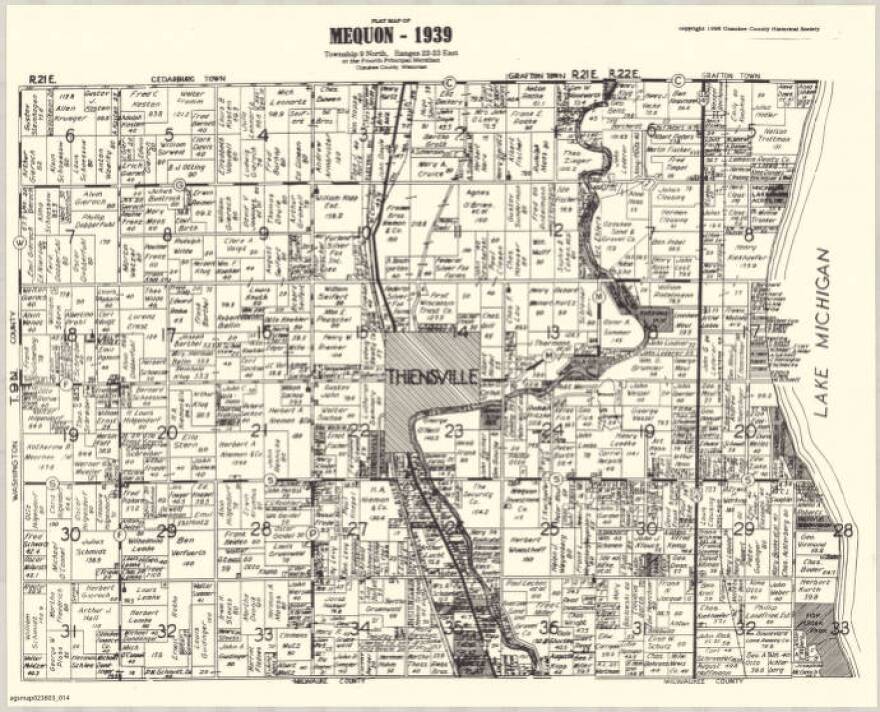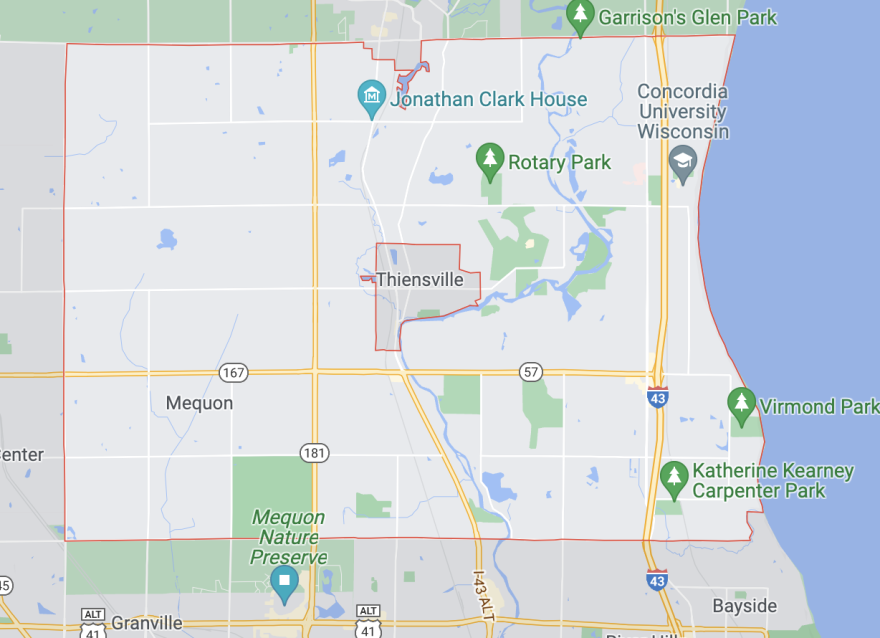Take a look at a map of the Milwaukee suburbs, and you’ll notice one is not like the others. The village of Thiensville is about one square mile and surrounded on all sides by Mequon.
Bubbler Talk question-asker Hannah Francis grew up in Mequon and now lives in Washington, D.C. She started to wonder about Thiensville during a geography lesson back when she was in high school.
"We were learning about enclaves and exclaves," Francis said. "An enclave being a territory that is completely surrounded by another territory. And I was thinking about it and I was like obviously I grew up in one – well I grew up in the territory that surrounded it."

Other examples of enclaves include San Marino in Italy and Lesotho in South Africa.
"I just thought that was kind of interesting and I tried to figure out why," Francis said. "Because in most cases that enclaves had happened on accident, most of the territories end up becoming one territory anyway."
Thiensville is a picturesque village of about 3,000 people, located on a bend of the Milwaukee River.

I stopped in Fiddleheads, a popular coffee shop on Main Street, to see if the question of why Thiensville is landlocked by Mequon occurred to anyone else.
"Oh yeah, I’m confused about that as well," said the barista. "I’m just really confused about, why it’s so small, and then you go to Mequon and it’s right there? It’s like in the center of Mequon?"

Bob Blazich, a longtime Thiensville resident and president of the Mequon-Thiensville Historical Society, describes it like this: "Mequon is like a donut and Thiensville’s the donut hole."
Blazich said to understand how the donut came to be, you have to start with the man Thiensville is named after: John Henry Thien. The wealthy German immigrant was a Freethinker – opposed to organized religion – who sought out a new home.
"When John Henry Thien came in 1842, he was a businessman and miller," Blazich said. "A dam had been approved across the Milwaukee River – he built it. He had a small tavern, he had a general store. He owned 148 acres."
Thien’s settlement became the commercial hub of the town of Mequon. Farmers in Mequon would take their grain to Thien’s mill, and other businesses congregated around it.
It wasn’t until Thien was long dead, in 1910, that Thiensville incorporated as a village. There were 289 residents at the time.
"In 1910, once we got the census here in the Thiensville, they had a vote," Blazich said. "And the people who lived on roughly 600 acres decided they were going to put boundaries around it and become a village."

Blazich isn’t sure why they didn’t extend the borders to include Mequon, which itself didn't incorporate as a city until 1957. One reason could be that Thiensville and Mequon had distinct identities – Thiensville with its Freethinker roots and commercial character, Mequon with its sprawling farmland.
"In fact, if you go back to the 1940s and 50s, people in Thiensville almost had their own accent," said Blazich, who grew up nearby in Cedarburg. "You could tell where they were from because it was a very heavily German area. And they weren't from Thiensville, they were from 'Teens-ville.' It's always had its own identity."

Mequon and Thiensville today share many things – a school district, a library. But they each have their own government, police and fire departments. Blazich said consolidating Mequon and Thiensville would probably save taxpayers money. He doesn’t see it happening, though.
"I think people value their identity more than the taxes," said Blazich. "I own a house in Thiensville and if it were 100 feet to the west, I would pay $1,000 less in taxes on it. But I don’t want to be 100 feet to the west. I want to be in Thiensville."
Blazich said he likes living in a place where he knows so many people by name. For example, he knows exactly who to call during the winter when a road needs snowplowing.

Ken VanFossan was an alderman in Mequon in the 1990s. He said the idea of consolidation was "thrown around" at the time.
"There was some talk of maybe just given the scenario — it's almost silly to have this little town right in the middle of a much bigger town, each with their own police force, each with a lot of doubling up on things," VanFossan said. "There were people who preferred to see it as one big municipality. But most people here were very protective of their town."
It may be a mystery exactly why Thiensville residents in 1910 decided to create an enclave rather than including Mequon. But the small-town identity has stuck, and the donut hole stands strong.
Have a question you'd like WUWM to answer? Submit your query below.
_







